These creatures with a strange and unexpected appearance are not the product of fairy tales, nor do they emerge from movie studios, like aliens and other science fiction monsters. Despite their nightmarish (or psychedelic) appearance, these animals are as real as life itself and inhabit our world.
Tufted deer (Elaphodus cephalophus)
Imagine for a moment that Bambi, Disney’s unforgettable fawn, were crossed with a thirsty Dracula. The result of this encounter would surely resemble the tufted deer, a small ruminant that would be adorable if it weren’t for some enormous upper canines or fangs, more typical of a super predator than this elusive inhabitant of the mountain forests of Vietnam. But the tufted deer does not use these fangs to hunt or feed; it is believed that they serve as a weapon in the violent disputes that the males wage over territory, and in extreme cases to defend themselves against enemies.
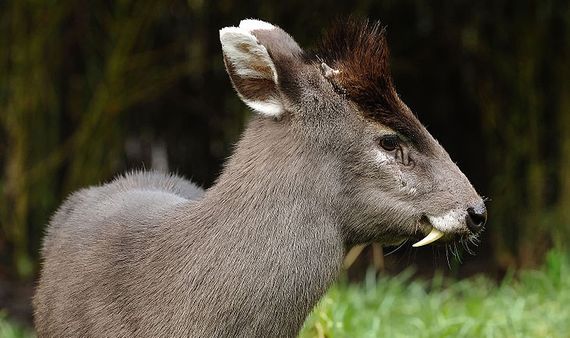
These attributes are so inescapable that the plume that crowns their forehead, and to which they owe their name, tends to go unnoticed, as do the little horns that the adult males sport and that remain hidden under that tuft of hair. The counterpart to these vampiric fangs is the absence of upper incisors, so that the tufted deer crushes the leaves, roots, berries, fruits and herbs that make up its diet by mashing them between the lower incisors and a calloused pad that takes the place of the teeth. Perhaps unsurprisingly, tufted deer constitute by themselves a separate genus within the deer family.
Shoebill (Balaeniceps rex)
A species of pelican right out of Jurassic Park. That would be an apt description for the shoebill, whose name alludes to its disproportionate and terrifying shoe-shaped beak; it is the third longest among birds, has the greatest circumference and is lined with sharp edges that serve to decapitate its prey before swallowing them whole. They usually feed on fish, but also rodents, snakes and even young crocodiles.
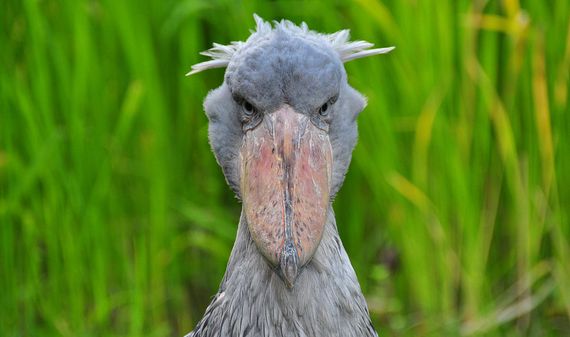
But besides the beak, this member of the Pelicaniformes —which can measure up to 1.5 metres and weigh almost 10 kilograms— also has abnormally large feet, which allow it to stand upright and motionless on the aquatic vegetation of the African marshes in which it dwells. It will silently scrutinise its surroundings to detect its prey, and then pounce on its target, submerging its entire head under the water and trapping with its beak everything that it finds in its path. As it emerges, the bird shakes its head violently from side to side to expel everything that doesn’t interest it (algae, mud, etc.) and keep its tasty trophy, which it swallows in one gulp after decapitating it
As if that weren’t enough, and although it doesn’t usually do it, it’s also quite capable of flying great distances thanks to the enormous span of its wings, which allow it to glide for long periods… and also leave its fictional Jurassic island?
Mexican axolotl (Ambystoma mexicanum)
The Mexican axolotl salamander has earned a place in the Pokémon universe thanks to its peculiar appearance, looking like a giant tadpole. And, in essence, that’s what it is. The axolotl is a species of amphibian that when reaching adulthood does not go through a process of metamorphosis, but retains all the features of its juvenile phase, magnified in a thick, spindle-shaped body of up to 30 cm in length. It’s most notable features are its large head (flattened with a pair of tiny eyes without eyelids), a voluminous tail and ridiculously small, thin legs finished off with fine, pointed toes.
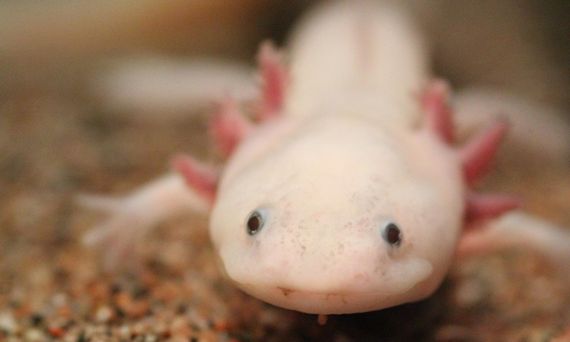
Endemic to the lacustrine system of the Valley of Mexico, it spends most of its time underwater thanks to three sets of gills on each side of its head, although it does possess some barely developed lung sacs, which provide some brief moments of respite out of the water. Given its appearance, it’s perhaps not surprising that the ancient Aztecs called it axolotl or “water monster,” a name that seems even more appropriate when one learns that its mouth is armed with more than a hundred tiny teeth, arranged in rows, and a retractable tongue used to hunt small fish, fry and even fellow axolotls, which it first traps between its teeth before suddenly sucking them in.
Beyond its bizarre appearance, the axolotl has aroused great interest among scientists, who study it for its incredible capacity for regeneration, which is not only limited to appendages and limbs (as in lizards) but also allows it to recover vital structures and organs, and even parts of the brain. Research carried out on axolotls has demonstrated its ability to restore the full functionality of limbs and organs from other individuals that have been transplanted and/or implanted.
Sea pig (Scotoplanes globosa)
Although its appearance might lead us to think its an alien entity, the sea pig is actually a sea cucumber, that is, a type of echinoderm. It abounds in the deepest and coldest regions of the oceans of the whole planet, where it wanders in “herds” of hundreds of individuals that advance peacefully, supported by the tubular appendages that serve as their hydraulic legs. The creature has five to seven pairs of legs, which it inflates and deflates to propel itself forward.
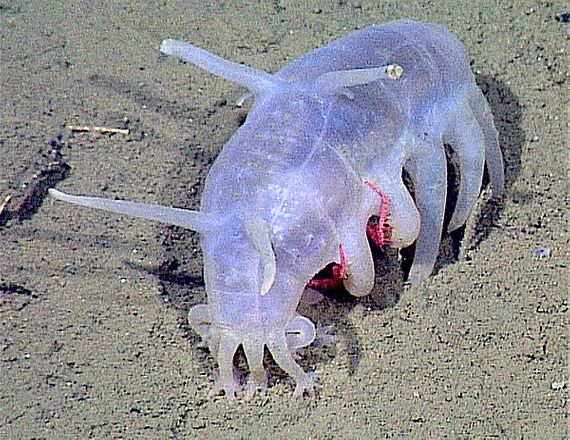
The long antennas that appear at both ends of its back are also legs modified to act as sensory organs, with which it detects the chemical signals given off by its food sources: the detritus (remains and waste of other organisms) deposited on the seabed, which marine pigs ingest using the ring of tentacles that surrounds each one of their multiple tubular mouths.
Red-lipped batfish (Ogcocephalus darwini)
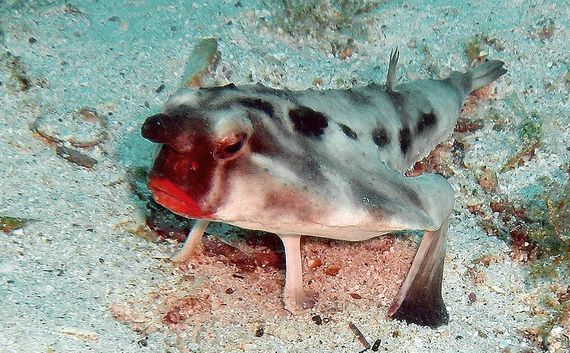
While its morphology is evocative of a bat, up to 40 cm in length, it is actually a fish, whose swimming fins act like legs, and whose dorsal fin is shaped like a rod with which it is thought to attract its prey. What’s more, it has lips of an intense fluorescent red that threaten to plant an indelible kiss. This strange sight can only be seen on the reefs of the Galapagos Islands, where it is usually found sitting quietly on the sandy bottom, resting on its anal and pelvic dorsal fins, greatly modified to become pseudo-legs, which allow it to walk and to adopt its curious pose, but at the price of making it very difficult to swim. It is believed that its showy lips help it to recognise members of the same species and as a beacon to attract fellow batfish of the opposite sex.
Miguel Barral
Comments on this publication